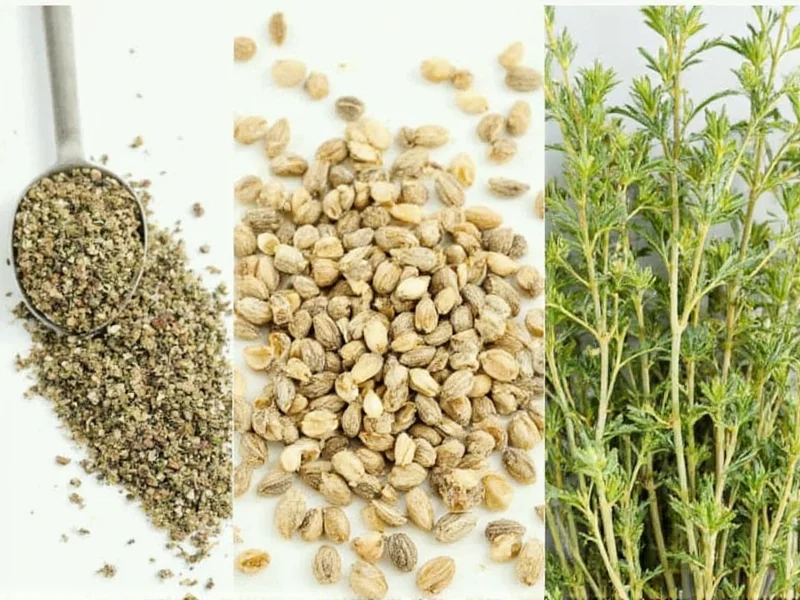Running out of dried oregano mid-recipe doesn't have to ruin your culinary creation. Understanding oregano's unique flavor profile—earthy with subtle peppery and minty notes—helps identify suitable replacements that preserve your dish's integrity. This guide provides practical, tested alternatives based on flavor chemistry and culinary application rather than generic suggestions.
Why Oregano Matters in Cooking
Dried oregano concentrates the herb's natural oils, delivering a robust flavor that's essential in Mediterranean and Mexican cuisines. Its earthy, slightly bitter profile cuts through rich tomato sauces, complements grilled meats, and balances olive oil-based dressings. When substituting, consider both the flavor compounds and how they interact with other ingredients in your specific recipe.
| Substitute | Ratio (vs 1 tsp dried oregano) | Flavor Profile | Best For |
|---|---|---|---|
| Marjoram | 1:1 | Sweeter, milder oregano cousin | Delicate sauces, chicken dishes |
| Italian Seasoning | 1.5:1 | Balanced herb blend | Pizza, pasta, general Italian cooking |
| Thyme | 1:1 | Earthy, lemony, less peppery | Stews, roasted vegetables, tomato sauces |
| Basil + Thyme mix | 1/2 tsp each | Sweet basil + earthy thyme | Mediterranean dishes, caprese-inspired recipes |
| Herbes de Provence | 1:1 | Floral, complex herb blend | French-inspired dishes, roasted meats |
Detailed Substitute Analysis
Marjoram: The Closest Relative
As oregano's sweeter cousin in the mint family, marjoram provides the most seamless substitution. Use equal amounts when replacing dried oregano in pizza sauces or Greek salads. Marjoram lacks oregano's slight heat but maintains the herbal backbone essential to Mediterranean cuisine. This makes it the ideal substitute for dried oregano in tomato sauce where overpowering flavors would disrupt balance.
Italian Seasoning Blend: The Pantry Solution
Most commercial Italian seasoning contains 30-40% oregano along with basil, rosemary, and thyme. When using as an oregano substitute for Italian cooking, increase the amount by 50% to compensate for the diluted oregano content. For authentic results, make your own blend with 2 parts oregano (or substitute), 1 part basil, and 1 part thyme.
Thyme: The Earthy Alternative
Thyme's earthy, slightly lemony profile works well when you need an oregano replacement with similar flavor profile but less pepperiness. It shines in slow-cooked dishes where its flavor develops gradually. Use equal amounts in meatloaf, roasted vegetables, or bean dishes. Avoid in delicate fish preparations where thyme's stronger flavor might dominate.
Fresh vs. Dried Oregano Substitutions
When substituting fresh oregano for dried, use a 3:1 ratio (3 teaspoons fresh for 1 teaspoon dried). The reverse applies when replacing fresh with dried. Remember that fresh oregano to dried conversion ratio accounts for moisture content and concentrated oils in dried herbs. Always add dried herbs earlier in cooking to allow flavors to bloom, while fresh herbs should be added in the last 5-10 minutes.
Recipe-Specific Recommendations
Pizza and Pasta Sauces
For authentic substitute for dried oregano in pizza applications, combine equal parts basil and thyme. This blend mimics oregano's complexity without overwhelming the tomato base. Add a pinch of red pepper flakes to recreate oregano's subtle heat.
Greek Dishes and Salads
In Mediterranean preparations, marjoram works best as the primary substitute. For tzatziki or Greek salads, add a few drops of lemon juice to compensate for oregano's natural citrus notes that marjoram lacks.
Mexican Cuisine
When making fajitas or enchilada sauces, combine equal parts cumin and thyme for an earthy profile similar to oregano. Add a pinch of oregano substitute near the end of cooking to preserve volatile flavor compounds.
Common Substitution Mistakes to Avoid
- Overcompensating: Using too much substitute creates unbalanced flavors. Start with recommended ratios and adjust to taste
- Ignoring cooking time: Dried substitutes need time to rehydrate and release flavors; add them earlier than fresh herbs
- Mixing incompatible herbs: Avoid combining rosemary with oregano substitutes in delicate dishes—it overpowers other flavors
- Forgetting acid balance: Oregano's slight bitterness balances rich ingredients; add a splash of vinegar if your substitute lacks this quality
Creating Your Own Oregano Substitute Blend
For the most reliable how to replace dried oregano in recipes solution, keep this versatile blend in your pantry: combine 2 tablespoons dried thyme, 1 tablespoon dried basil, and 1 teaspoon dried mint. Store in an airtight container away from light. This mixture works across cuisines and provides consistent results when oregano runs out unexpectedly.
FAQs About Oregano Substitutes
Can I use dried basil instead of dried oregano?
Yes, but use 25% less dried basil than the oregano amount called for, as basil has a sweeter, less earthy profile. For the best results in Italian dishes, combine equal parts dried basil and thyme to create a more balanced substitute that better mimics oregano's complex flavor.
What's the best substitute for dried oregano in Greek dressing?
Marjoram works best as a 1:1 substitute in Greek dressings. For a more authentic flavor profile, use equal parts dried dill and marjoram. The dill adds the grassy notes that oregano provides in traditional Greek preparations, while marjoram contributes the necessary earthiness.
How does oregano substitution affect cooking time?
Dried herb substitutes generally need 5-10 minutes of cooking time to fully release their flavors. Add them when you would normally add dried oregano in your recipe. If using fresh substitutes, add them during the last 5 minutes of cooking to preserve their volatile flavor compounds, similar to how you'd handle fresh oregano.
Can I use oregano oil as a substitute for dried oregano?
Yes, but use extreme caution—oregano oil is highly concentrated. Substitute 1-2 drops of oregano oil for 1 teaspoon of dried oregano. Always dilute the oil in another liquid ingredient like olive oil or vinegar first, as direct application can create unpleasantly strong pockets of flavor in your dish.











 浙公网安备
33010002000092号
浙公网安备
33010002000092号 浙B2-20120091-4
浙B2-20120091-4